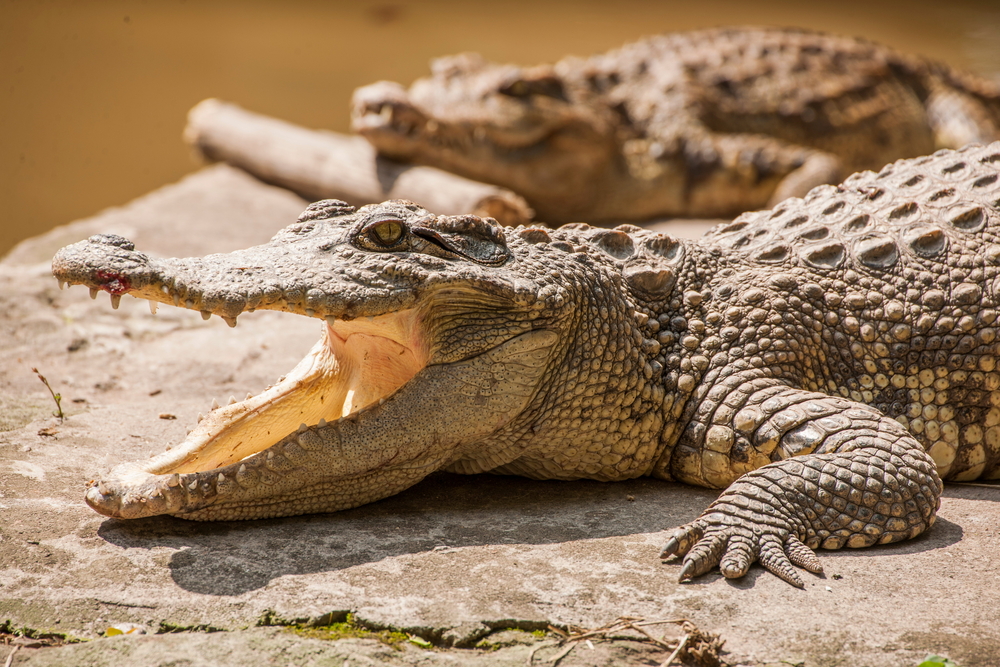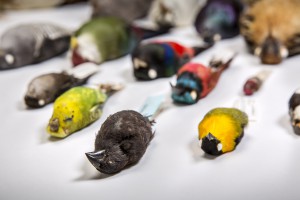A History of Birds, Crocodilians... and Dinosaurs
It appears that today, thanks to the power of whole genome analysis and as published in Science magazine, we gain a knowledge about the ancient history of birds as never before.
“An international team of scientists has completed the largest whole genome study of a single class of animals to date. To map the tree of life for birds, the team sequenced, assembled and compared full genomes of 48 bird species representing all major branches of modern birds including ostrich, hummingbird, crow, duck, falcon, parrot, crane, ibis, woodpecker and eagle species. The researchers have been working on this ambitious genetic tree of life, or phylogeny, project for four years.” – LSU Press Release
I’ve written about the legacy of bird research at LSU before, for LSU’s research magazine (see page 29 of this pdf). So when Robb Brumfield sent me an email today two hours before publication of a series of Science papers about bird evolution, of which he is a contributing author, I couldn’t resist sharing!
"Birds fly." My favorite quote from a paper, and very relevant to their history of speciation. http://t.co/KvQNPeLP3A @fkbarker
— Robb Brumfield (@RTBrumfield) December 2, 2014
“Mapping the tree of life is one of the grand challenges in biological science. Being part of this project is like being part of the writing of evolutionary history.” - Robb Brumfield, director of the LSU Museum of Natural Science and Roy Paul Daniels Professor of Biological Sciences, in LSU Press Release
So what is so significant about this new series of papers, and the research that went into producing them?
“For the first time, the data we collected and analyzed provide a statistically robust phylogenetic hypothesis for all major bird lineages - basically a map of the relationships between major bird groups that has high statistical support,” LSU Assistant Professor of Biological Sciences Brant Faircloth wrote to me in an e-mail today. “This is something that we really have not been able to do to this point, theoretically due to a lack of sufficiently good (meaning quality AND quantity) data. We also have not been able to reliably date the divergence of major bird lineages - largely, again, due to a sketchy phylogeny that resulted from insufficient data - and that is also something we also do in the bird paper. We found that many avian lineages diverged from one another roughly 66 million years ago, after the cretaceous paleogene (KPg) mass extinction event. It's possible that birds were able to fill new niches that resulted from this event... something that could explain their rapid [speciation] around this time.”
One of the papers in particular, published today in Science, piqued my interest: “Three crocodilian genomes reveal ancestral patterns of evolution among archosaurs.”
An international team of scientists, including LSU’s Brant Faircloth, generated draft genomes of three crocodilians in an effort to investigate the relationship between crocodilians, dinosaurs and birds (a group collectively referred to as the archosaurs). The genomes included that of the American alligator (Alligator mississippiensis – I know I’ve seen these guys!), the saltwater crocodile (Crocodylus porosus) and the Indian gharial (Gavialis gangeticus). Excitingly, these genomes are now publicly available for additional study (more details in the Science paper).
It turns out that crocodilians have a VERY slow rate of genome evolution, quite unlike the relatively rapid evolution of bird genomes – and bird speciation – observed by researchers. For example, the alligator and the crocodile, who share a common ancestor from around 80 million years ago, share 93% genome-wide identity. This is similar to the level of identity between humans and rhesus macaques, with a common ancestor from only 23 million years ago. And yet, crocodilians are the closest living relatives of all birds.
“Between 60 and 70% of crocodilian proteins had conserved functional motifs on the basis of comparison to other vertebrates […] the molecular evolution of crocodilians is slower than that of all other lineages” – Three crocodilian genomes reveal ancestral patterns of evolution among archosaurs, Science
“In my opinion, the most interesting thing about this study is that we basically show crocodilians have **extremely** slow rates of molecular evolution,” writes Brant Faircloth, co-author of the crocodilian paper in Science, in an e-mail to me. “Perhaps among the slowest rate of all vertebrates (i.e., slower than turtles). This appears true across all parts of their genomes. Not only is this rate slow, we found that the common ancestor of archosaurs (crocs, birds, dinosaurs, pterosaurs) likely also had a slow rate of molecular evolution. This rate appears to have increased (substantially) in the lineage that led to birds.”
What is amazing, Brant says, is that in the face of slow molecular evolution – and a smaller bank of genetic variation compared to birds and mammals – crocodilians have been extremely successful as organisms throughout history, and robust to changes in their environment.
But why the difference in molecular evolution between birds and crocodilians? Why did bird genomes evolve rapidly, while crocodilian genomes slogged along at a slower pace? (Does it have anything to do with flight?)
“Honestly, we don't know,” says Brant. “It possibly has to do with body size and generation time. I would also guess that is has to do with the major re-organization of the bird body plan (smaller, lighter, warm blooded, etc.) and the (mostly) simultaneous reduction in the genome size of birds, combined with lots of ecological opportunity associated with the many new niches available... but that's just one guess.”
Head over to Science magazine for more information on this huge batch of bird - and crocodilian - genomes!
Darwin could have never imagined this. Here's Geospiza fortis leading the charge! http://t.co/KPtPH2IRxd pic.twitter.com/jFXDdKugRw
— Robb Brumfield (@RTBrumfield) December 11, 2014



